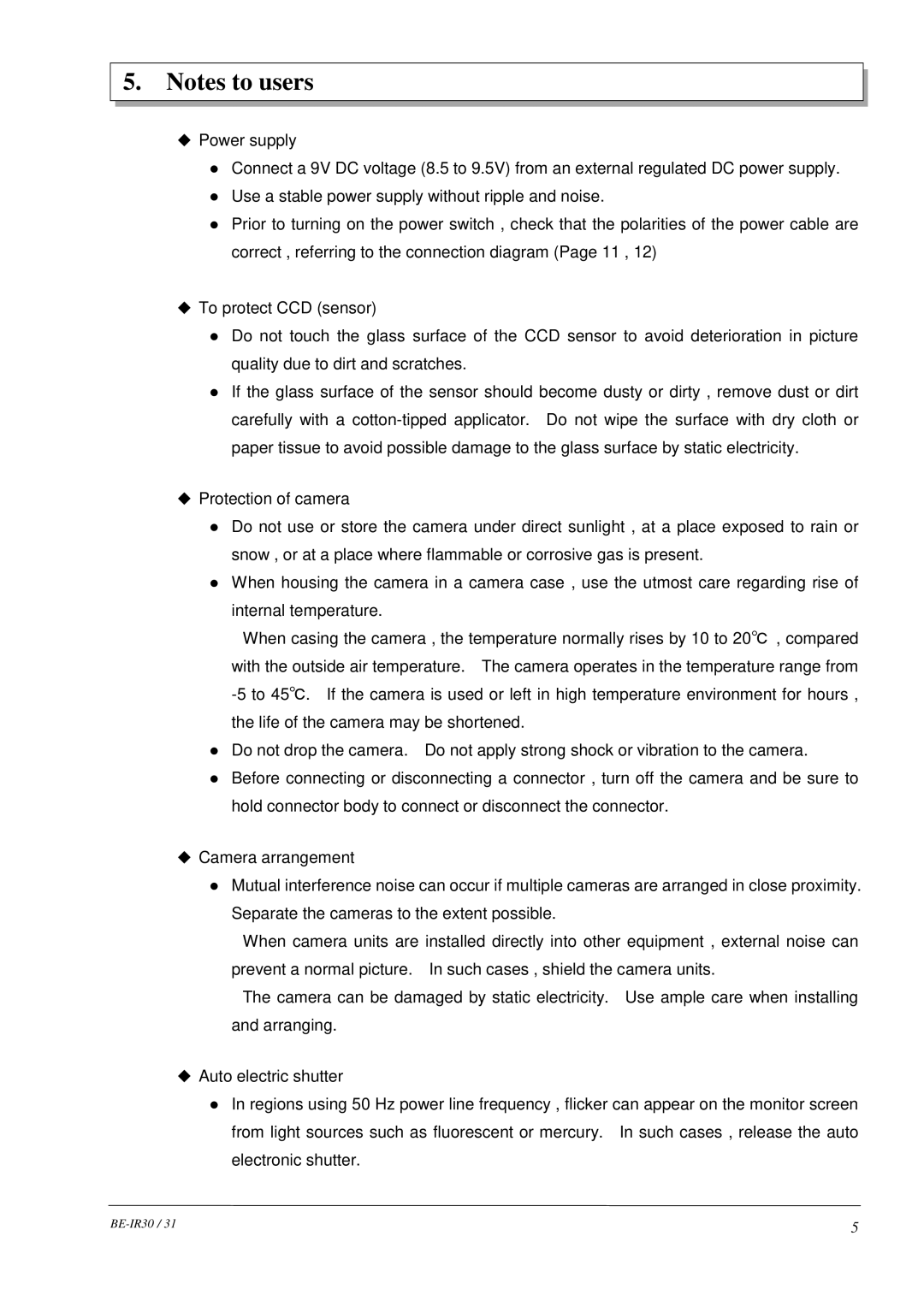
5.Notes to users
Power supply
zConnect a 9V DC voltage (8.5 to 9.5V) from an external regulated DC power supply.
zUse a stable power supply without ripple and noise.
zPrior to turning on the power switch , check that the polarities of the power cable are correct , referring to the connection diagram (Page 11 , 12)
To protect CCD (sensor)
zDo not touch the glass surface of the CCD sensor to avoid deterioration in picture quality due to dirt and scratches.
zIf the glass surface of the sensor should become dusty or dirty , remove dust or dirt carefully with a
Protection of camera
zDo not use or store the camera under direct sunlight , at a place exposed to rain or snow , or at a place where flammable or corrosive gas is present.
zWhen housing the camera in a camera case , use the utmost care regarding rise of internal temperature.
When casing the camera , the temperature normally rises by 10 to 20℃ , compared with the outside air temperature. The camera operates in the temperature range from
zDo not drop the camera. Do not apply strong shock or vibration to the camera.
zBefore connecting or disconnecting a connector , turn off the camera and be sure to hold connector body to connect or disconnect the connector.
Camera arrangement
zMutual interference noise can occur if multiple cameras are arranged in close proximity. Separate the cameras to the extent possible.
When camera units are installed directly into other equipment , external noise can prevent a normal picture. In such cases , shield the camera units.
The camera can be damaged by static electricity. Use ample care when installing and arranging.
Auto electric shutter
zIn regions using 50 Hz power line frequency , flicker can appear on the monitor screen from light sources such as fluorescent or mercury. In such cases , release the auto electronic shutter.
| 5 |
